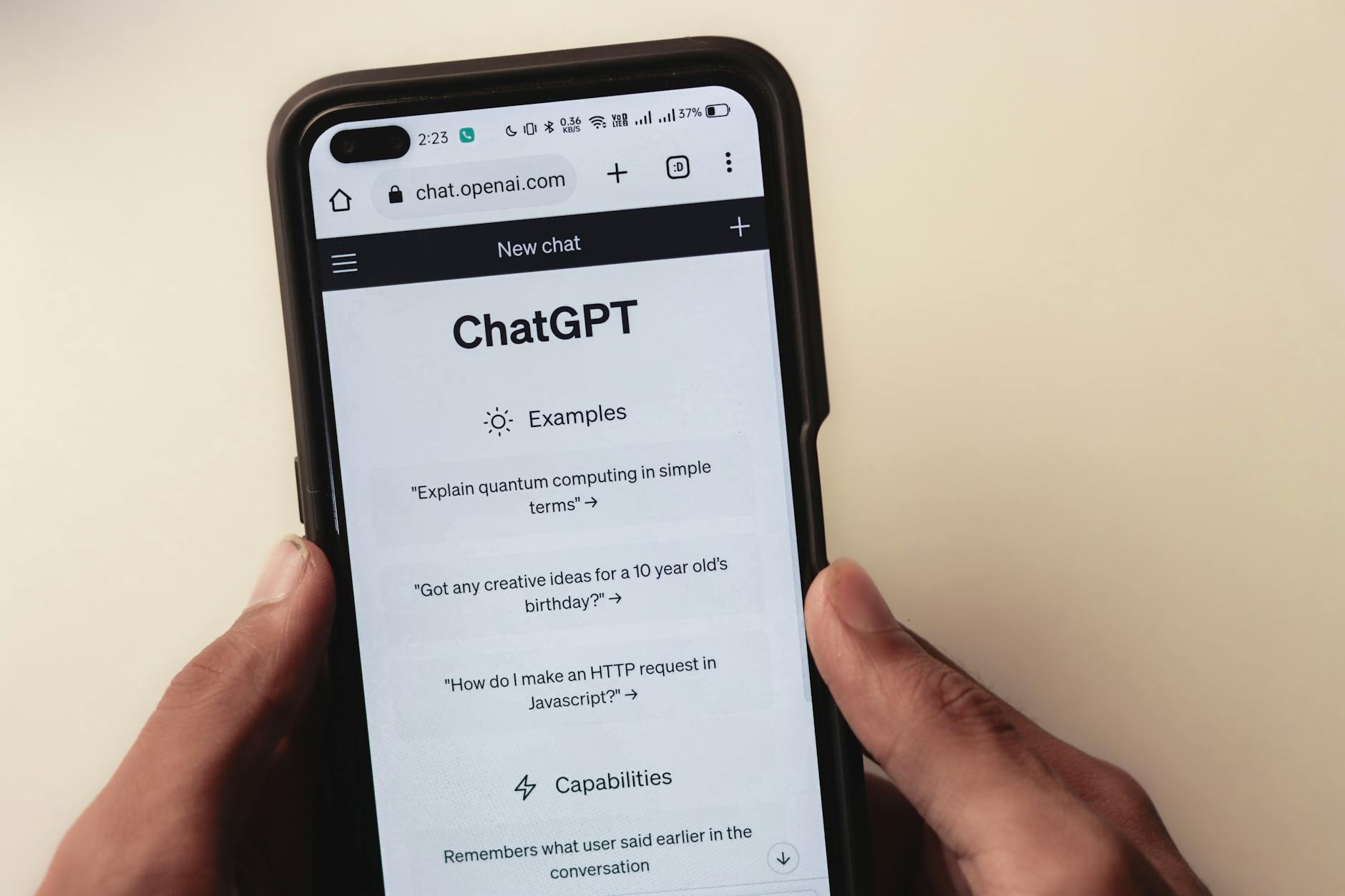WELCOME
to the blog

How to Optimize Your Coaching Website to Attract More Clients
How to Optimize Your Coaching Website to Attract More Clients
Your website is more than a pretty face online—it's the foundation of how potential coaching clients see your business and decide to connect with you. Done right, it becomes your tireless 24/7 sales assistant, guiding visitors to take action. But if it's not optimized, you could be losing out on opportunities to grow your business.
In this post, I'll share simple but strategic ways to fine-tune your site so it attracts and converts more clients. Whether it's clear messaging, faster loading times, or thoughtful design, small changes can lead to valuable results. Curious about how to start? Schedule a free consultation with us today, and let’s create a site that works as hard as you do.
Understanding Your Audience
Knowing who you’re trying to reach is the foundation of building a coaching website that attracts clients. Imagine trying to write a heartfelt letter without knowing who it’s meant for — it simply doesn’t resonate. By understanding your audience, you can shape your messaging, design, and offerings to align with their needs and desires. Let’s break this down.
Define Your Ideal Client Profile
The first step in connecting with your audience is defining who they are. Your ideal client profile (ICP) is like a GPS for your marketing — it guides you on where to go and what to say.
Here’s how to get started:
Demographics: Think about your client’s age, profession, and income level. Are they corporate executives looking for leadership coaching, or solopreneurs working on personal development?
Psychographics: Understand their values, interests, and motivations. For instance, are they driven by emotional growth or professional success?
Challenges: Identify their roadblocks. What keeps your client awake at night? Is it time management, self-confidence, or scaling their business?
When you narrow down these specifics, you’ll start to see a clear image of who you’re helping. This clarity is what allows your website content to make someone feel like you’re speaking directly to them.
Curious to see how this works in practice? Explore tools and services designed to help you better engage your clients on She Has Clients Demo.
Analyze Client Needs and Pain Points
Once you know who your audience is, the next step is understanding what they need. Every piece of content on your website should serve as a solution to a specific problem your audience is facing.
Here’s how to uncover and address client needs:
Talk to Your Audience: Conduct surveys or hold casual conversations with existing clients. Ask open-ended questions like, "What’s your biggest struggle right now?" or "What do you wish you had support with?"
Research Your Industry: Check forums, read reviews, and observe social media comments. Pay attention to recurring themes — these are your clients subtly telling you what they need.
Create Targeted Content: Once you identify their pain points, craft blog posts, downloadable resources, or service descriptions that speak to those struggles. For example, if your audience struggles with work-life balance, you could offer a free guide on time-blocking strategies.
By weaving solutions into your website copy, visitors will feel seen and supported—and that sense of connection builds trust.
Looking for more ideas to optimize your setup? Consider the Set-Up & Migration Services available through She Has Clients.
By understanding your audience thoroughly, you position your website as a valuable resource rather than just another online portfolio. This connection is the key to converting visitors into paying clients. Curious about how to start tailoring your website to their needs? Schedule a free consultation with us today, and we’ll help you craft a strategy that attracts your ideal coaching clients.
Crafting a Compelling Value Proposition
Your coaching website’s value proposition is like the front door to your services—it needs to be inviting and clearly communicate why someone should step inside. Without a strong value proposition, visitors may bounce off your site before they even have a chance to explore what you offer. Let’s dive into two key strategies to ensure your value proposition works like a magnet for potential clients.
Create an Engaging Homepage
Your homepage is the first impression your audience gets—so make it count! A homepage should immediately answer three vital questions for the visitor: Who are you? What do you offer? Why should they care? Here’s how to make that clear:
Start with a Clear Headline: Use a short, benefit-driven statement that highlights how you help solve a specific problem. Example: "Helping Solopreneurs Build Confidence to Scale Their Business Without Overwhelm."
Keep Design Simple: Choose a clean layout that makes text easy to read. Don’t overload it with too many visuals or distractions—clarity always wins.
Use a Call-to-Action (CTA) Above the Fold: Place a prominent CTA that invites visitors to take the next step, like scheduling a consultation or downloading a resource. The fewer clicks, the better!
Feature Professional Images or Videos: A quick, authentic video explaining your coaching style can immediately connect with visitors. Remember, people buy from those they trust.
Showcase Social Proof: Add client testimonials or success stories near the top of the page. Seeing real results from others builds trust and credibility.
With your homepage dialed in, visitors will feel welcomed and intrigued to explore further.

Photo by Brett Jordan
Write Copy That Resonates
Your website copy is your chance to speak directly to your audience's hearts and minds. It’s not about listing your skills or credentials—it’s about showing you understand their deepest challenges and aspirations. Here’s how to nail it:
Call Out Their Pain Points: Use empathetic language to acknowledge what they’re struggling with. For example, “Feeling stuck in your career? You’re not alone.”
Paint a Picture of Success: Follow up with how their life or business could look after working with you. Something as simple as, “Imagine achieving work-life balance without sacrificing income,” can resonate on a deep level.
Use Simple, Conversational Language: Write like you’re speaking to a friend. Replace stiff phrases like “we provide solutions” with “I’ll help you…” to foster connection.
Focus on Benefits, Not Features: Instead of listing the steps of your process, explain the results clients can expect—more clarity, improved revenue, or a re-energized sense of purpose.
Include Strategic CTAs: Encourage visitors to take small, actionable steps throughout your copy. Sprinkle CTAs like, "Ready to start thriving? Schedule a call today!"
When your words reflect how well you understand your audience, they’ll trust you as the solution they need. Every section of your website should make them think, “Finally, someone gets me!”
Curious about how to refine your value proposition to attract dream clients? Schedule a free consultation with us today, and let’s align your website’s messaging with what your audience truly needs.
Designing for User Experience (UX)
Your website isn’t just about aesthetics—it’s about creating an experience that captivates and converts visitors into loyal clients. Great design should feel effortless to navigate, like finding your way through a well-lit store with clear signs. Let’s look at two essential elements of designing for an amazing user experience.
Simplify Navigation
Think of your website’s navigation as a roadmap for your visitors. If it’s confusing or cluttered, they’re more likely to leave than to dig deeper. A straightforward menu ensures they find what they’re looking for—whether it’s your services, blog posts, or a contact page—quickly and effortlessly. Here are some best practices to keep in mind:
Keep Menus Simple: Limit primary menu items to 5–7 options. Too many choices can overwhelm and confuse visitors.
Use Descriptive Labels: Instead of generic terms like "Services," opt for more specific phrases such as "Business Coaching Packages." This clarity saves visitors from guessing.
Make Dropdown Menus Intuitive: If you use dropdown menus, ensure they’re easy to interact with on all devices. Sub-menu options shouldn’t require pixel-perfect precision to click.
Include a Search Feature: Adding a search bar gives users an additional way to quickly navigate your site, especially useful for blogs or resource-heavy websites.
Stick to Familiar Patterns: Place navigation menus where users expect (usually at the top or side). Reinventing the wheel here can lead to frustration.
By simplifying your navigation, you’re creating a stress-free experience that keeps visitors moving in the right direction. And when it’s easy for someone to explore your site, they’re more likely to stay—and take action.
Ensure Mobile Device Compatibility
Did you know that more than half of web traffic comes from smartphones and tablets? A website that shines on desktops but stumbles on mobile is like a restaurant with great food but bad service—people leave disappointed. Ensuring a responsive design keeps your site performing great no matter how it’s accessed.
Here’s how to ensure compatibility:
Prioritize Mobile-Friendly Layouts: Use a responsive design template that adapts to all screen sizes. This removes the need for users to zoom in or scroll sideways to read content.
Test Tap Targets: Ensure buttons and links are large enough for people to tap accurately with their fingers. Tiny buttons equal user frustration.
Speed Matters: Mobile users are often on slower connections, so optimize your site’s loading time. Compress images and simplify code to keep things running fast.
Preview Across Devices: Regularly test your website on different screen sizes and browsers. Simulators and tools like Google’s Mobile-Friendly Test can help you catch any issues early.
Use Legible Typography: Avoid fonts that are too small or challenging to read on a smaller screen. Clear, accessible text ensures your message gets through—no squinting required.
By focusing on mobile compatibility, you’re welcoming visitors wherever they are, boosting their likelihood of engaging with your content and services.
Curious about how user experience improvements could transform your coaching website into a client magnet? Schedule a free consultation today, and let’s craft a design that works for your audience on any device!
Leveraging SEO Techniques
Your website might look amazing, but without thoughtful SEO, it's like setting up a beautiful shop on a deserted street. To make sure your coaching website attracts the right audience, you need to master a few essential SEO tactics. Here’s how to get started.
Research Relevant Keywords
Identifying high-performing keywords is the foundation of any successful SEO strategy. These are the search terms your coaching clients type into Google when looking for services like yours. Choosing the right ones ensures you’re speaking their language—and showing up where it matters.
Here’s an easy way to conduct keyword research:
Start with Brainstorming: Think about what your ideal client might search for. Common coaching-related terms could include "life coach near me," "business coaching for entrepreneurs," or “overcoming procrastination tips.”
Use a Keyword Tool: Free tools like Google Keyword Planner or Ubersuggest can show you search volume, competition, and related phrases. Look for keywords with a decent search volume but moderate competition.
Focus on Long-Tail Keywords: Instead of targeting generic terms like “coaching,” opt for specific phrases like “daily productivity tips for solopreneurs.” These long-tail keywords help you reach people further down the decision-making funnel.
By building your content around researched keywords, you’re planting yourself directly in front of coaching clients who need you.

Photo by Pixabay
Optimize Meta Descriptions and Tags
Metadata is like a sneak peek into your website for search engines and users. It's what people see before they even click your link in search results. Ignoring this step is like serving a delicious dish without letting anyone smell it first.
Here’s how you can optimize your metadata:
Craft Compelling Meta Descriptions: Write a 150-160 character snippet for each page that highlights its value. For instance, "Learn actionable tips to scale your coaching business with tailored strategies from [Your Brand Name]."
Use Targeted Keywords: Incorporate your researched keywords naturally into your titles, meta descriptions, and headings. Keywords placed in these areas have a bigger impact on search rankings.
Avoid Keyword Stuffing: Keep it natural. Overloading metadata with keywords doesn’t just look spammy—it can harm your rankings. Instead, use phrases that draw visitors in organically.
When your metadata is optimized, not only will you rank higher, but you’ll also enjoy better click-through rates as your listings catch more eyes.
Write SEO-Friendly Content
SEO-friendly content doesn’t mean writing for robots; it’s about creating human-centered, search-optimized material that provides value. Every blog post or webpage you publish should connect with your audience while satisfying search engines.
Here are a few tips to keep your content SEO-ready:
Address Common Pain Points: Write about topics that solve your clients’ problems. For example, a blog titled “How to Boost Confidence as a New Coach” can drive targeted traffic.
Use Headings and Subheadings: Proper formatting makes your content easier to read and improves its chances of ranking higher. Use your keywords in headings (like we just did here!).
Add Value That Keeps Readers Engaged: Long-form content (1,000+ words) generally ranks better, but only if it’s useful. Avoid fluff and stay focused on the topic.
Incorporate Internal and External Links: Include links to other useful pages on your site, like She Has Clients Affiliate, and credible external sources. This builds authority and keeps users exploring your site.
Optimize Images for SEO: Add descriptive alt text to your images, using keywords when relevant without overloading them.
Remember, great content has dual goals—it helps the reader and is easy for Google to understand.
Curious about how SEO can take your coaching website to the next level? Schedule a free consultation today, and we’ll help you pinpoint strategies to improve your online searchability!
Integrating Lead Generation Tools
A well-optimized website doesn’t just inform visitors—it actively works to turn them into leads. By thoughtfully integrating the right tools, you can simplify the client journey and increase conversions without adding extra effort on your end. Here’s how to take your lead generation game to the next level.
Use Conversational AI Booking Bots
Integrating AI-powered chatbots can be a game-changer for managing client inquiries. These bots work around the clock, answering common questions, providing information about your services, and even scheduling appointments—all without needing your constant attention.
For example, a potential client visiting your website late at night doesn’t have to leave with unanswered questions. The chatbot can politely guide them through booking a free consultation or downloading a helpful resource. This quick, personalized interaction creates a positive first impression while keeping your pipeline full.
AI chatbots can also qualify leads by asking basic questions about a visitor’s needs. Imagine a bot asking something like, "What’s your biggest challenge right now—time management, confidence, or business growth?" Not only does this engage the visitor, but it also gives you valuable insight into their needs.

Photo by Sanket Mishra
Want to explore how conversational AI can work for you? Check out the support options available through She Has Clients, where experts can help integrate these tools into your website.
Include Clear Call-to-Actions (CTAs)
A good CTA is like a well-lit path guiding visitors toward their destination. Without it, even the most interested client might hesitate to take the next step. Your website should feature multiple strong, clear CTAs that encourage specific actions.
Here are some examples of CTAs tailored for coaching clients:
Schedule a Call: "Ready to transform your life? Book a free discovery call today!"
Download a Free Guide: "Struggling with productivity? Get my free e-book, '10 Steps to Take Control of Your Time,' and start succeeding now!"
Join an Event: "Interested in learning more? Sign up for my upcoming webinar on achieving work-life balance."
Position these CTAs strategically throughout your site—at the top of landing pages, after blog posts, or even within your navigation menu. Remember, the more visible and action-oriented your CTAs are, the more likely visitors will follow through.
Create High-Value Lead Magnets
Lead magnets are irresistible offers that visitors can’t help but say yes to. They exchange their contact information—like an email address or phone number—for something valuable, such as an e-book, checklist, or webinar.
Think about your ideal coaching client. What’s a challenge they’d love help with? You can create a resource tailored to solving that issue. For instance:
Free Guide: "10 Ways to Overcome Self-Doubt as a New Entrepreneur."
Video Series: "3-Part Masterclass: Building Confidence in Your Career."
Exclusive Webinar Access: "How to Create a Work-Life Balance That Sticks."
Place sign-up forms for your lead magnets on high-traffic pages like your homepage, blog posts, or service pages. Once they’ve signed up, nurture those leads through email campaigns or personal follow-ups, turning them into paying clients.
Curious about how to integrate lead generation tools into your own site? Schedule a free consultation today, and we’ll help you create a strategy that attracts clients with ease.
Building Trust Through Social Proof
When visitors land on your website, they're asking themselves one key question: "Can I trust this person to help me?" That's where social proof comes in. It showcases your credibility and track record in a way that feels real, relatable, and persuasive. By integrating testimonials, success stories, and certifications, you create a digital handshake, quietly assuring potential clients that they're in good hands. Let’s dive into how to do this effectively.
Showcase Testimonials Effectively
Testimonials are one of the most powerful ways to build trust. They let your happy clients do the talking, which automatically carries more weight. But how you present these testimonials matters just as much as the words themselves.
Here’s how to make them stand out:
Place Testimonials Where They Matter: Ensure they're highly visible, like on your homepage, service pages, or even your about page.
Use Photos for Extra Impact: A picture of the client alongside their review makes the testimonial feel more authentic.
Feature Specific Results: Instead of generic praise like “Great coaching services,” use testimonials that highlight specific outcomes: “After working with [Your Name], I doubled my client base in just six months.”
Create Video Testimonials: Videos feel more personal and genuine, which can resonate on a deeper level with viewers.
Organize your testimonials strategically to help guide visitors through your site. For example, if someone is exploring your coaching packages, showing them testimonials related to those offerings reinforces their decision to book a consultation.
Curious how testimonials can transform your site? Find inspiration from resources at She Has Clients.
Highlight Results and Success Stories
Everyone loves a good story, especially one where they see themselves in the “before” and aspire to the “after.” Showcasing client success stories brings your expertise to life, solidifying your authority as a coach.
Here’s how to craft compelling success stories:
Start with the Client's Problem: What challenges were they facing before working with you? Be specific to make it relatable.
Showcase the Process: Briefly explain how your coaching helped them. Did you create a step-by-step action plan? Introduce them to a new mindset? Tailor the details to show your unique approach.
Share Tangible Results: Focus on outcomes. Did they hit $10K months? Gain confidence to pursue a new career? The more measurable, the better.
Use Real Data and Quotes: Layer stories with supporting numbers or direct quotes from the client. This adds a layer of authenticity that simple claims can't replicate.
Place your success stories in a dedicated section on your website. Include visuals like "before and after" stats or bold pull quotes for added emphasis. Each story you share becomes proof that you deliver real, life-changing results.
Incorporate Certifications and Credentials
In the coaching world, credentials aren’t just pieces of paper—they’re signals of expertise and professionalism. Displaying your certifications communicates that you've been trained and recognized in your field, which is particularly reassuring for potential clients who are comparing options.
Here’s how to emphasize your qualifications:
Create a Certifications Section: Add a section on your homepage or about page that lists your certifications, accreditations, and memberships.
Use Logos for Recognition: If your certification comes from a well-known organization, display their logo prominently.
Add Context: Briefly explain what each certification means and what it took to obtain. For example, “Certified Life Coach through XYZ Institute, requiring 120+ training hours.”
Make It Timely: Update this section regularly to include any new courses, workshops, or ongoing education you’ve completed.
By presenting your certifications, you’re answering an unspoken question many prospective clients have: “Is this coach legit?” It’s a simple yet effective way to create trust without saying a word.
Want to create a coaching website that showcases your expertise and builds trust effortlessly? Schedule a free consultation today, and we’ll help you design a site that converts visitors into enthusiastic clients!
Enhancing Engagement Through Multimedia
Gone are the days of static, text-only websites. To truly captivate and engage your audience, incorporating multimedia elements can make your coaching website dynamic and memorable. Visual and interactive content doesn't just grab attention—it creates a deeper connection with your visitors. Here’s how multimedia can enhance engagement and help potential clients feel more connected to you and your brand.
Create Video Introductions
Including a video introduction on your homepage is like being able to greet each visitor personally. A warm, engaging video can create an instant connection and leave a lasting impression. Think of it as your digital handshake.
Tips for a great video introduction:
Keep it Short, but Impactful: Aim for 60 to 90 seconds. A quick overview of who you are, who you help, and what results clients can achieve with your coaching is enough to hook viewers.
Speak Directly to Your Ideal Client: Look into the camera, and use conversational language that feels personal.
Showcase Your Personality: Leave any script-reading monotone at the door. Be natural and show your passion—this is your chance to shine!
Add Subtitles: Many visitors watch videos without sound. Subtitles ensure your message gets across regardless.
End with a Call-to-Action: Wrap up by telling viewers the next step they can take, like scheduling a consultation.
An effective video introduction is a great way to convey warmth and professionalism while setting the stage for why someone should work with you.

Photo by Kaboompics.com
Host Webinars or Live Sessions
Interactive sessions like webinars or live Q&As are powerful tools for turning site visitors into engaged prospects. These events allow you to connect on a more personal level while showcasing your expertise.
How to use live content effectively:
Pick Topics Your Audience Cares About: Focus on themes that address the challenges they’re eager to solve, like building confidence or balancing business and life.
Encourage Participation: Use polls, chat features, or open Q&A sessions to make attendees feel involved. People love to be part of the conversation!
Promote Consistently: Announce your webinar well in advance and remind your audience with follow-up emails and social posts.
Offer a Replay Option: Not everyone will attend live; make it easy for registrants to catch up later.
End with an Invitation: Always wrap up with a clear next action—be it booking a call, enrolling in a program, or subscribing to your email list.
Live sessions build trust and community, both of which are foundational for converting leads into coaching clients. Curious about how to integrate multimedia into your own site to drive engagement? Schedule a free consultation with us today, and let’s build a strategy that works for you!
Monitoring and Improving Website Performance
Your business website should work like a well-oiled machine—functioning smoothly, delivering results, and converting visitors into eager clients. To keep it running at peak performance, continuous monitoring and strategic improvements are non-negotiable. Let’s look at two critical aspects to stay ahead of the game.
Track Conversion Metrics
Tracking your website’s performance isn’t just about counting clicks—it’s about understanding what works and what needs fixing. By focusing on conversion metrics and using the right tools, you can gain valuable insights into how visitors interact with your site.
Here’s what to monitor:
Bounce Rate: Are people leaving your site after visiting just one page? If your bounce rate is high, it might mean your content or design isn’t resonating.
Click-Through Rate (CTR): This measures how often people click on your calls-to-action. A low CTR might signal that your buttons or links need to be more compelling or visible.
Visitor-to-Lead Conversion Rate: Out of all your visitors, how many are taking the step to book a call, sign up for a lead magnet, or contact you? This is a direct measure of your website’s ability to generate leads.
Page Load Speed: Slow-loading sites frustrate visitors and send them elsewhere. Tools like Google PageSpeed Insights can help identify areas to speed things up.
Traffic Sources: Where are your visitors coming from? Knowing whether they’re arriving via social media, search engines, or referrals helps you prioritize your marketing efforts.
To track these metrics effectively, tools like Google Analytics, Hotjar, or Crazy Egg are invaluable. They reveal how people move through your site, helping you make data-driven decisions. If you’re unsure where to start, schedule a free consultation to learn more about optimizing your website’s performance.
Regularly Update Content
Outdated content on your site doesn’t just look bad—it tells search engines that your pages aren’t relevant anymore. To maintain visibility and rank higher in search results, you need a strategy for keeping your content fresh.
Here’s how to keep it updated:
Start with a Content Audit: Revise your existing pages regularly to ensure accuracy. Are all your services up-to-date? Are pricing and testimonials accurate? This is your chance to clean up old, stale content.
Focus on High-Performing Pages: Look at which blog posts or service pages generate the most traffic. Update these first by adding new examples, statistics, or insights.
Create a Blog Schedule: Regularly publishing fresh blog posts can signal to search engines that your site is active. Plus, valuable content keeps your audience coming back for more.
Optimize for Trends: Stay relevant by tying your content to seasonal events, current industry trends, or frequently searched topics.
Repurpose Old Content: If you have hidden gems in your archive, refresh them with updated designs or additional information, then share them again.
By staying on top of your content plan, you’re not only serving your audience but also keeping search engines happy. Curious about how SEO-tuned content can help you attract more clients? Schedule a free consultation today, and we’ll help you create a content plan that drives traffic and conversions.

Photo by Alex P
Conclusion
An optimized website is your most valuable asset in attracting and converting coaching clients. Clear messaging, impactful design, and engaging content work together to establish credibility and trust. Every detail, from navigation to SEO, strengthens the connection between your brand and your audience.
Are you ready to turn your website into a magnet for your ideal clients? Schedule a free consultation today, and I’ll help you design a strategic plan that takes the guesswork out of attracting and engaging your target audience. Let’s create a site that works as hard as you do!

